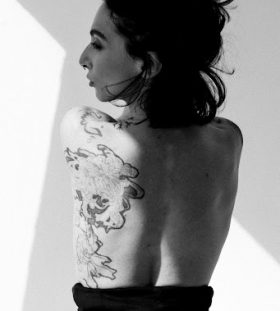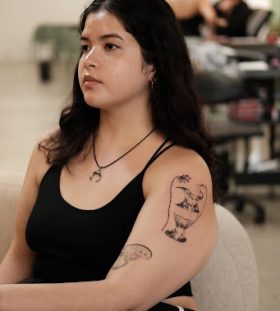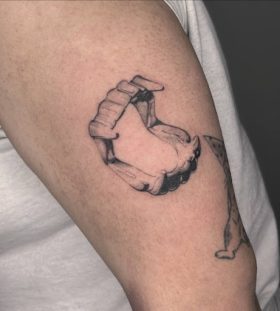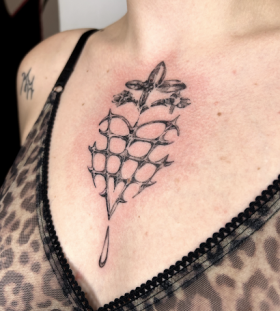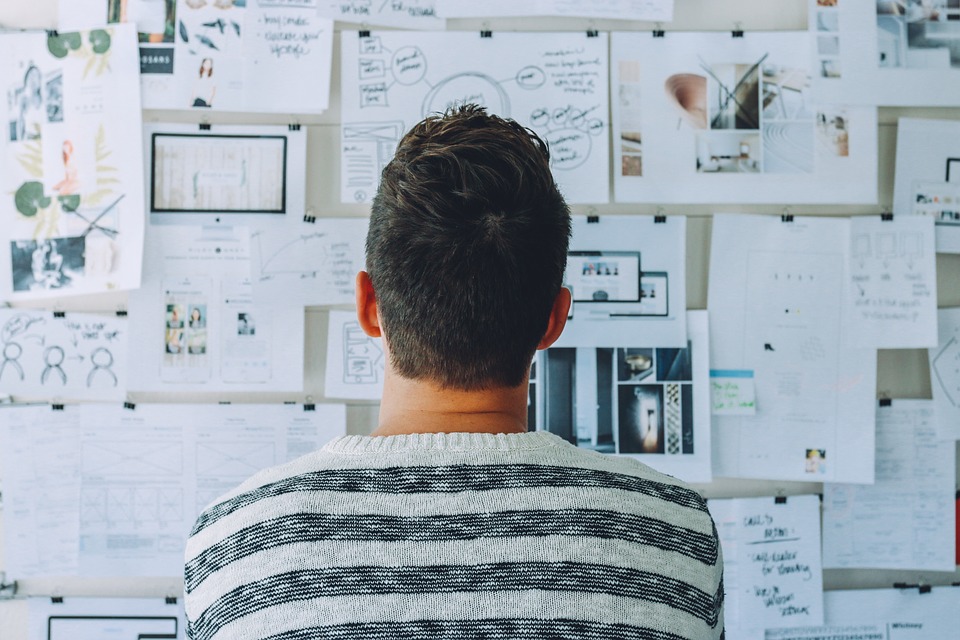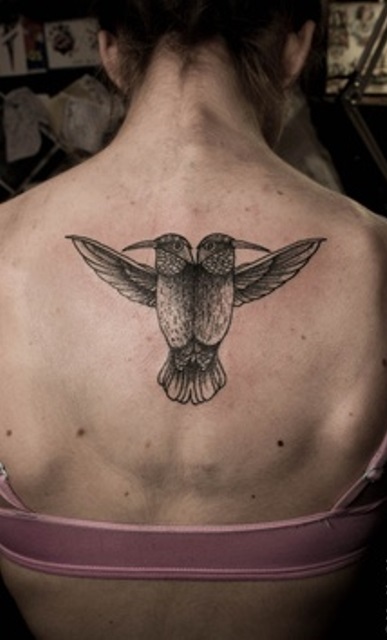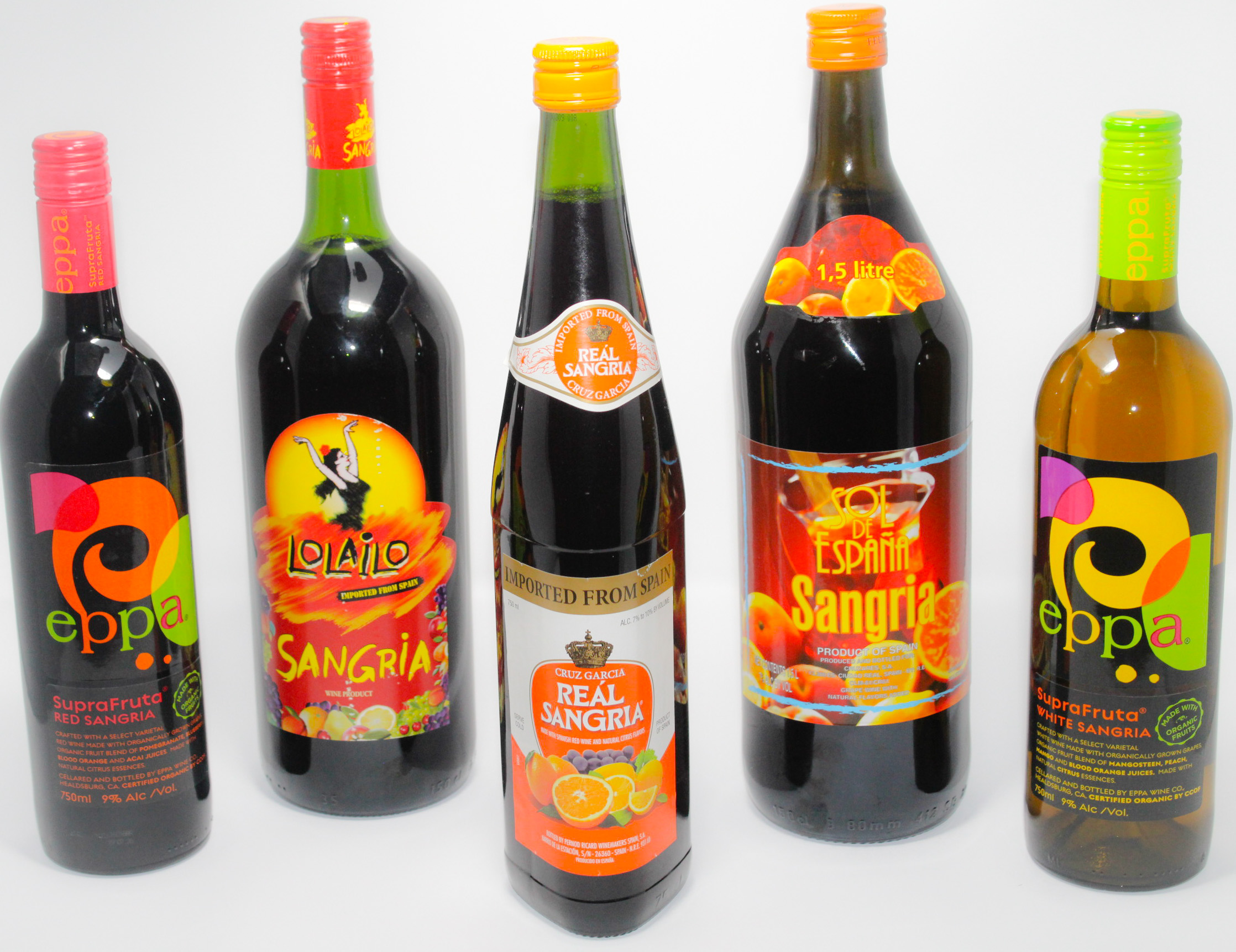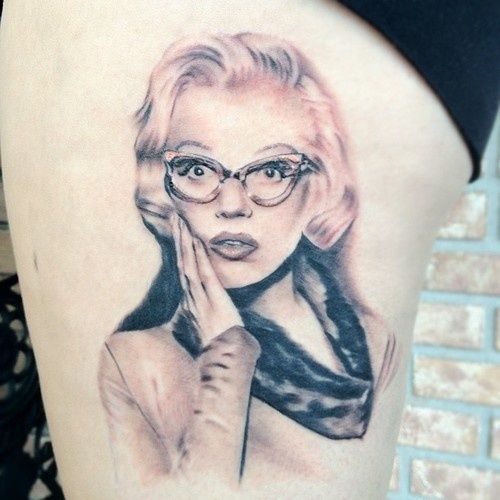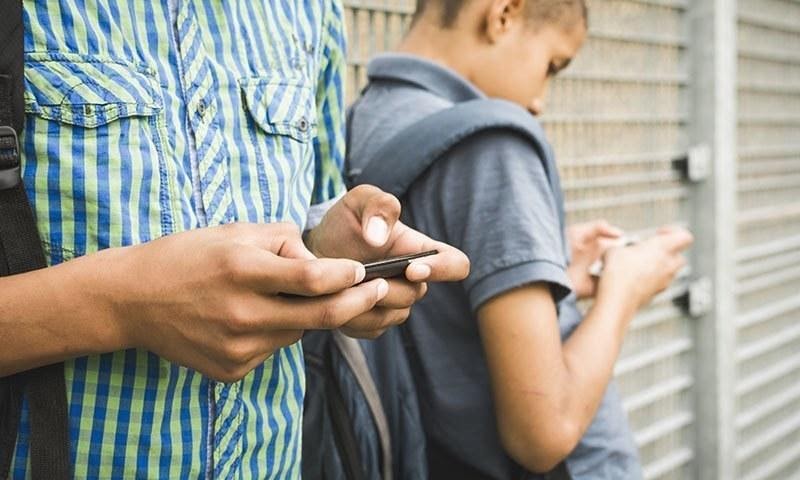“Lines, Layers, and Living Canvases” — A Conversation with Tattoo Artist Mané Diás

Let’s start with the basics — how did you find your way into tattooing?
Honestly, it wasn’t a straight line. I was born in Yerevan, raised in Ukraine, and grew up surrounded by change — that shaped how I see the world and respond to it. I’ve always been drawn to the unusual and the mythical, but tattooing didn’t feel like a real possibility at first. It wasn’t until I dropped out of university and crashed out of every conventional plan that I gave myself permission to consider it. I began tattooing friends in my cramped Kyiv apartment while bartending at night. No fancy setup — not even a table. But something about the imagery and the presence clicked with people. That connection still drives me today.
How would you describe your tattooing style?
I like to preserve the feeling of the tattoo being made by a person in an expressive, spontaneous drawing process and that is the impression I aim for in my designs and tattoos. I layer fine lines, play with the contrast between delicate shading and bold outlines, and aim to recreate the natural rhythm of unconscious graphite sketching. This approach allows the imagery — often ethereal, surreal, or bordering on the erotic — to feel more animated and intimate, both for myself and my clients.
Who or what inspires your work?
So much: cinema, music videos, fashion, literature — it’s more about mood than any one movement. I’m especially drawn to symbolism, spiritual or otherwise. There’s something powerful in imagery that feels ancient and universal, even if the viewer can’t quite decode it. Artists like Mapplethorpe, Munch, Schiele, and Parajanov have definitely left their fingerprints on my brain.
You’ve had quite a journey. Can you tell us how your career evolved over time?
After tattooing in my apartment, I started posting designs online, and strangers started showing up. Eventually I moved into a basement studio in central Kyiv — not glamorous, but a step forward. Later, I joined 22 Studio, which gave me a sense of community, and eventually co-founded my own studio near Sofiivska Square. We opened right before COVID, and had to shut down after the full-scale war began. That’s when I became a nomad — tattooing across Europe, guesting in studios from Vienna to Paris. Now I’m in the US, still traveling, still tattooing.
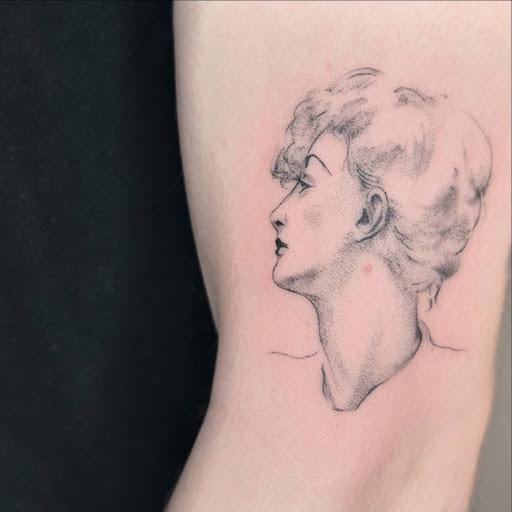
What’s your approach to working with clients?
Collaboration is everything. I invite clients to send references — not just images, but songs, words, anything that communicates the feeling they want. I love having natural, open-ended conversations about ideas. Some people come with very specific visions, others with abstract moods. Either way, I shape it into something that feels like them — and me.
Do you leave room for spontaneity during sessions?
Always. Some of the best ideas come unplanned, mid-session. I like to leave space for that spark — as long as the client’s comfortable.
What makes a project memorable for you?
There’s something special about regular clients who start and build their tattoo journey with me. I love weaving their separate tattoos into a larger visual narrative. I’ve also done freehand pieces using stencil brushes — literally painting figures on bodies with ink and brushes. It felt ritualistic. Clients would stand there, becoming a living canvas.
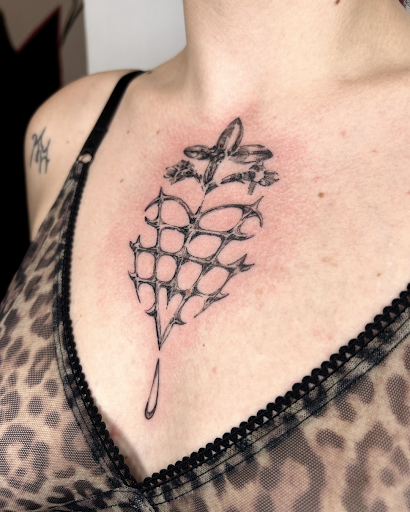
You’ve mentioned an interest in subconscious themes — can you expand on that?
My designs are meant to be read like visual poetry. They invite interpretation. I often use language in tattoos too — but usually in French, German, Ukrainian, or Armenian. A touch of mystery can be more powerful than obvious clarity.
How has the tattoo industry changed since you started?
It’s become more open, more experimental. That’s exciting — artists have more room to find their voice. But there’s also a downside. The idea that “anyone can do anything” sometimes erodes professional standards. Still, I’ve mostly stayed true to my style. The tools got better, my lines got cleaner, but the core hasn’t changed.
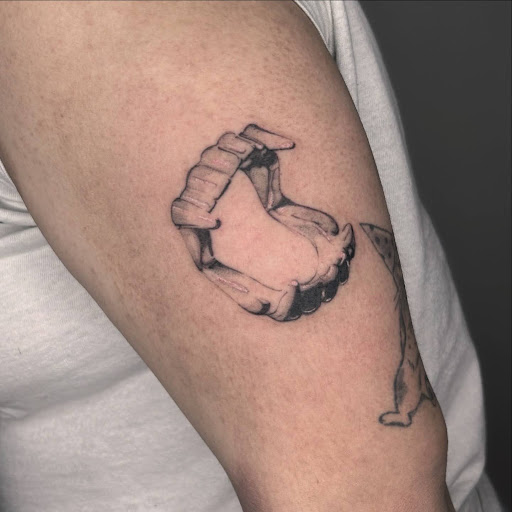
Any trends you’re keeping an eye on?
I’d love to see someone dedicate themselves to perfectly inking only bad AI-generated images. Just as a concept piece — pure commitment to absurdity. But more seriously, I admire any tattooer with a strong idea behind their process.
What’s your creative process like for custom tattoos?
It starts with listening. I gather everything the client brings — from clear references to elusive emotions — and then slowly shape it into something layered and personal. It’s a dance between their vision and mine. I share drafts, get feedback, and take time if needed. No rush. Art needs room to breathe.
Favorite tools in your kit?
I give my preference to thin and sharp cartridges, the 25/3 RL is my go-to needle, since to me it’s the most versatile. Magnums are fun to work with, too, — if the image is right you can get a lot out of using them in different angles. My most used techniques include fine lining, whip shading, and stipple shading. Combining them allows me to create that pencil-like effect on the skin, which stays intact long after the healing process.
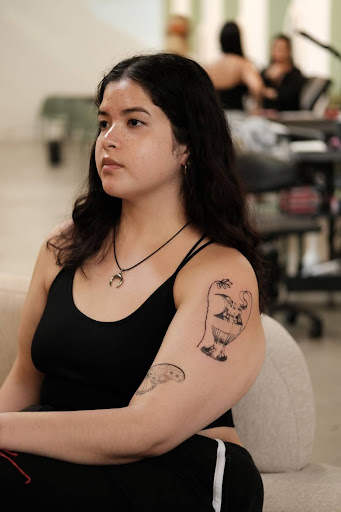
How has technology changed the way you work?
I began my professional journey back when we were still using needles instead of cartridges, and there wasn’t even a hint of second skin foil on the horizon. Assembling the machine, plugging in the clip-cord wires and the pedal—I feel ancient just listing all of it. Since then, there’ve been so many technological improvements that have made life as a tattooer way less miserable. Especially for a traveling artist like me, a wireless pen machine felt like a gift from above.
Finally — any advice for aspiring tattoo artists out there?
No illusion, no disillusion. Focus on what you do and why you do it. At the start of your career, don’t try to tattoo at the level you draw — instead, draw at the level you tattoo. Stylize your weak spots while working to improve them. Be persistent. Don’t compare yourself to others, but do seek advice. Be kind to yourself, to your colleagues, and to your clients. There’s no final destination — it’s a journey. And if you treat it that way, it’s much easier to enjoy the process.
You can find Mané on Instagram @themanedias and at themanedias.com.
